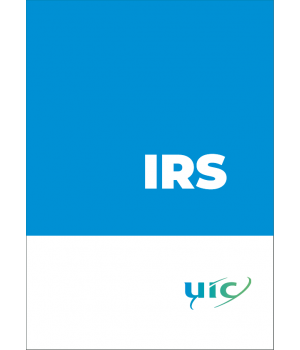
RailTopoModel - Railway infrastructure topological model
1st edition, 2016-9
- The IRS 30100 RailTopoModel describes a framework of concepts, to support the description of railway infrastructure, starting from the iron network and including business objects: network topology, infrastructure elements, their description, referencing and positioning, their behaviour, etc.
- The RailTopoModel should be used especially when there is a need to describe the network (structure and topology) at various levels of detail, depending on intended usage and on data availability. It is especially put the RailTopoModel at use when infrastructure data is expected to be used by various stakeholders for purposes not precisely known in advance, e.g. for network design and maintenance, traffic scheduling, and traffic management. The description can be as general as corridors; it can be detailed at line level, track level, down to physical components such as switches, lineside signals, or balises. An unlimited set of properties can be attached to component classes, for purposes such as conformity assessment, technical characteristics, life cycle data, including economic aspects, etc.
| Author | |
| ISBN | 978-2-7461-2513-1 |
| Pages | 80 |
Data sheet
- Language
- English
- Format
- Downloadable
- Edition
- Ed. no.1
- Edition date
- 01/09/2016
- Publication date
- 05/10/2016
- Page number
- 80
- Theme
- Infrastructure Infrastructure
- sku
- 30100/E/1-PDF
- Reference
- 30100
 Cookie preferences
Cookie preferences

